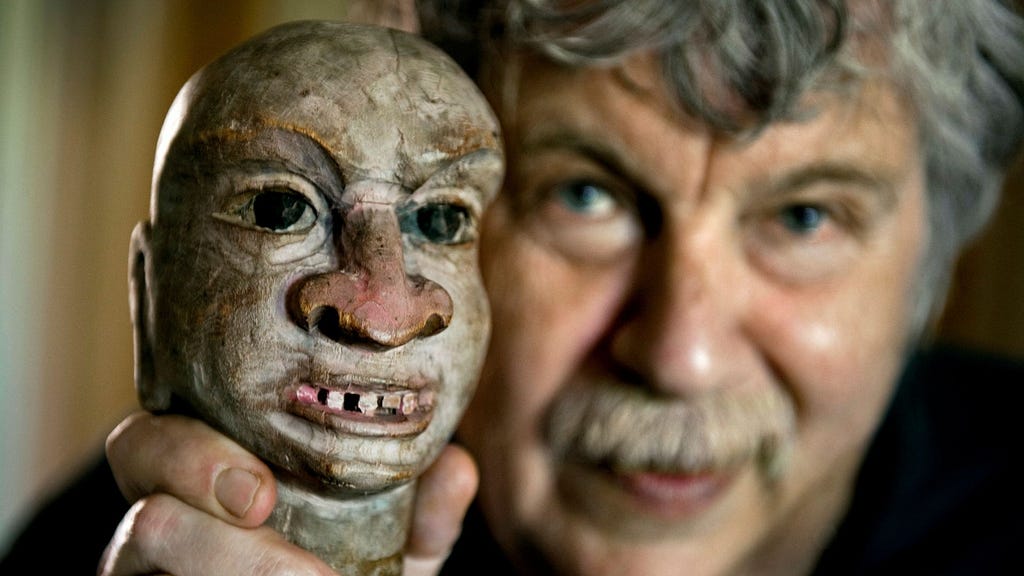The year 1975 marked a significant moment in Swedish cultural history, juxtaposing children’s entertainment with weightier societal concerns. Staffan Westerberg’s whimsical children’s program ”Vilse i Pannkakan” (Lost in the Pancake), featuring a boy lost in a world within a giant pancake, premiered alongside the sobering realities of terrorist attacks and political dictatorships, highlighted in SVT’s retrospective program ”Året var 1975” (The Year Was 1975). This juxtaposition of the fantastical and the real mirrored the broader cultural landscape, where escapism coexisted with anxiety about the state of the world. The program reminds us that even amidst unsettling times, the power of imagination and storytelling can offer solace and alternative perspectives. Westerberg’s program, with its power-hungry potatoes vying for control, resonated with a generation grappling with real-world anxieties, demonstrating the timeless nature of such allegorical narratives.
Ingmar Bergman’s film adaptation of Mozart’s opera ”The Magic Flute,” also released in 1975, offered another form of escapism, albeit one tinged with darkness. The author recounts a childhood encounter with the film, forever imprinted by its blend of enchanting music and unsettling imagery. The seemingly innocent smile of a young girl during the overture contrasted sharply with the later depiction of a terrifying journey through fire and distorted bodies, creating a lasting impression of the duality of human experience. This profound juxtaposition of beauty and terror, characteristic of both Mozart’s opera and Bergman’s interpretation, highlights the complex and often contradictory nature of life. The film’s impact underscores the powerful influence of art, especially on young minds, demonstrating its ability to both captivate and unsettle.
The release of Bergman’s ”The Magic Flute” sparked a public debate about the substantial financial resources invested by Sveriges Television (Swedish Television). Critics, like Olof Lagercrantz in Dagens Nyheter, questioned the expenditure on what they perceived as an elitist project detached from the everyday struggles of ordinary people. Lagercrantz’s critique, symbolized by his focus on the smiling girl in the overture, viewed the film as an act of grand self-aggrandizement by Bergman. Interestingly, while the editorial page debated the film’s cost, the front page focused on the identity of the young girl, highlighting the different priorities of cultural commentary and public interest. This contrasting coverage reflected a broader societal tension between high art and popular culture, a debate that continues to resonate today.
Fifty years later, the cultural landscape has shifted dramatically. In 1975, the focus was on protecting culture from the negative influences of commercialism. Today, the concern is often the reverse: safeguarding commercial interests from the perceived threats of culture. The author argues that this inversion reflects a troubling decline in the perceived value of cultural endeavors. This shift is exemplified by the diminishing share of the state budget allocated to culture, reaching its lowest point in two decades. This decline in funding, coupled with increasing pressure on cultural institutions to seek private financing, signals a concerning trend towards the commodification of art. The author suggests this trend risks compromising artistic integrity and limiting access to cultural experiences.
The ongoing debate surrounding the development of a Swedish cultural canon further illustrates this point. The initiative, plagued by resignations and internal disagreements, reveals a fundamental flaw: its primary aim appears to be political posturing rather than genuine cultural enrichment. The author contends that the project, intended to satisfy nationalistic sentiments rather than foster appreciation for the arts, is destined to fail. This failure is amplified by simultaneous cuts to funding for adult education and folk high schools, institutions vital to fostering cultural engagement and critical thinking. The irony of promoting a national cultural canon while undermining the very structures that support cultural participation underscores the disconnect between political rhetoric and genuine commitment to the arts.
The author proposes a more constructive approach, drawing inspiration from Finnish President Alexander Stubb’s emphasis on the crucial role of education and culture in a healthy democracy. Stubb’s view, which transcends political divides, highlights the importance of cultural literacy as a form of ”mental preparedness.” This perspective recognizes that a thriving cultural landscape strengthens societal resilience and fosters informed citizenship. The author suggests that including ”The Magic Flute” in the proposed cultural canon would serve as a potent reminder of the enduring power of art and the importance of supporting its creation. This inclusion would also honor the vision of Lars Löfgren, then head of TV2, who championed the film’s production despite its cost, recognizing its potential for both cultural impact and international recognition. The author concludes with a playful suggestion: alongside ”The Magic Flute,” Staffan Westerberg’s ”Vilse i Pannkakan” should also find a place in the canon, its timeless allegory of power struggles resonating even more strongly in today’s world dominated by tech giants.














